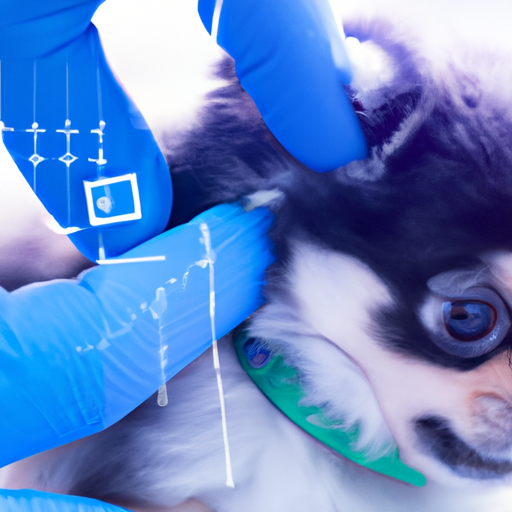As a caregiver, your pet is not just an animal – they’re a part of your family. You’d do anything to keep them safe, healthy, and secure. One of the best ways to ensure their safety is through microchipping. But where exactly are these chips placed in dogs, and why there? This guide will provide you with all the necessary details.
What are Microchips?
Microchips are tiny devices, about the size of a grain of rice, that use radio frequency identification (RFID) technology. These chips carry a unique identification number, which can be read by a scanner when it’s held over your pet.
- Registration: After the microchip is implanted, the unique number and your contact information is registered in a pet recovery database.
- Scanning: If your pet is lost and found, a vet or shelter can scan the microchip to retrieve the unique identification number.
- Recovery: The pet recovery service is called with the ID number, and your contact information is retrieved.
These chips are not tracking devices and don’t require a power source, so they can last your pet’s lifetime.
Where are Microchips Placed?
Microchips are typically placed in the subcutaneous tissue, which is the loose skin located between your dog’s shoulder blades. This location is recommended for two reasons:
- Standardization: It’s universally recognized, so if your pet is lost, a shelter or vet will know where to scan for a microchip.
- Safety: This area is one of the least sensitive areas on your dog’s body, reducing any discomfort from the implantation.
The process is similar to a routine vaccination and can be completed during a regular vet visit.
The Procedure of Microchipping
Inserting a microchip in dogs involves the following steps:
- Preparation: The microchip is pre-loaded in a sterile applicator and is scanned to ensure the unique ID number is legible.
- Placement: The vet will pinch the skin between your dog’s shoulder blades, insert the needle, and inject the microchip.
- Verification: Once inserted, the vet will scan your dog’s shoulder blades again to ensure the chip is working properly.
The procedure is quick, straightforward, and requires no anesthesia.
Importance of Microchipping
Microchipping is a permanent form of identification that can’t be easily removed or fall off like a collar or a tag. Here’s why it’s important:
- Increases Recovery Rates: If your pet gets lost, microchipping significantly increases the likelihood of them being returned to you.
- Proof of Ownership: In cases of pet theft, a microchip can serve as definitive proof of ownership.
- International Travel: Most countries require a microchip for identification if you plan on traveling with your pet.
Aftercare and Potential Complications
Once your dog is microchipped, there’s minimal aftercare required. However, there are few potential complications to be aware of:
- Migration: This is when the microchip moves from its original placement site. Regular vet check-ups can ensure it’s still in place.
- Infection: Though rare, there’s a minor risk of infection at the injection site. Monitor the area for any redness or swelling.
Remember, a microchip is not a replacement for a collar and tags. Always keep your contact information up to date in both places.
Frequently Asked Questions
What information is stored on the microchip?
Only the unique ID number is stored on the chip. Personal information is kept in the pet recovery database and is only accessible when that ID number is entered.
Can a microchip track my dog’s location?
No, microchips are not GPS devices and cannot track your pet’s location.
How often should the microchip be checked?
It’s recommended to have your vet scan the microchip during your pet’s annual check-up to ensure it’s still working properly.
Does the microchip need to be replaced?
No, microchips are designed to last the lifetime of your pet.
Can a microchip cause cancer in my dog?
There’s no definitive evidence that microchips cause cancer in pets. The benefits of microchipping far outweigh this minimal risk.
In conclusion, microchipping your dog is a simple procedure that offers lifelong benefits. It’s a small step towards ensuring their safety and your peace of mind.



